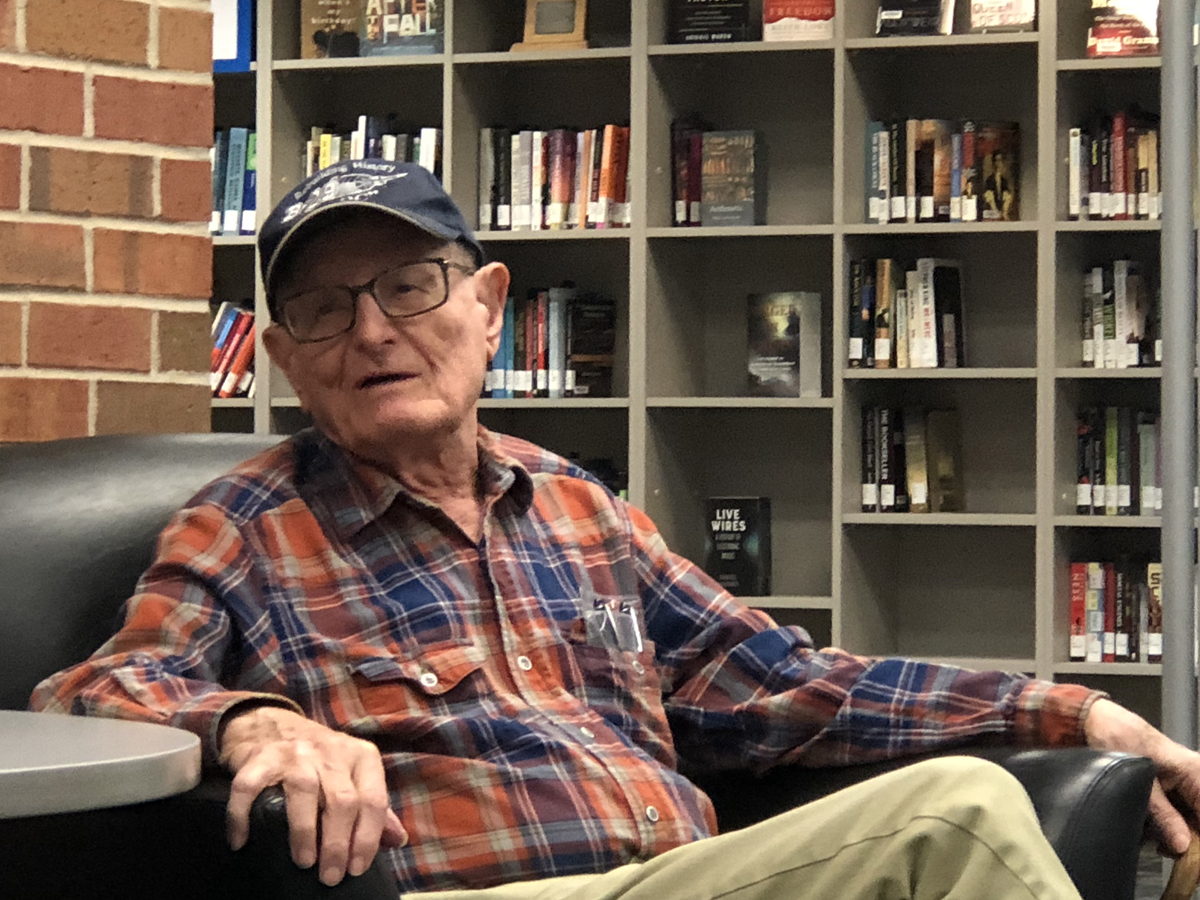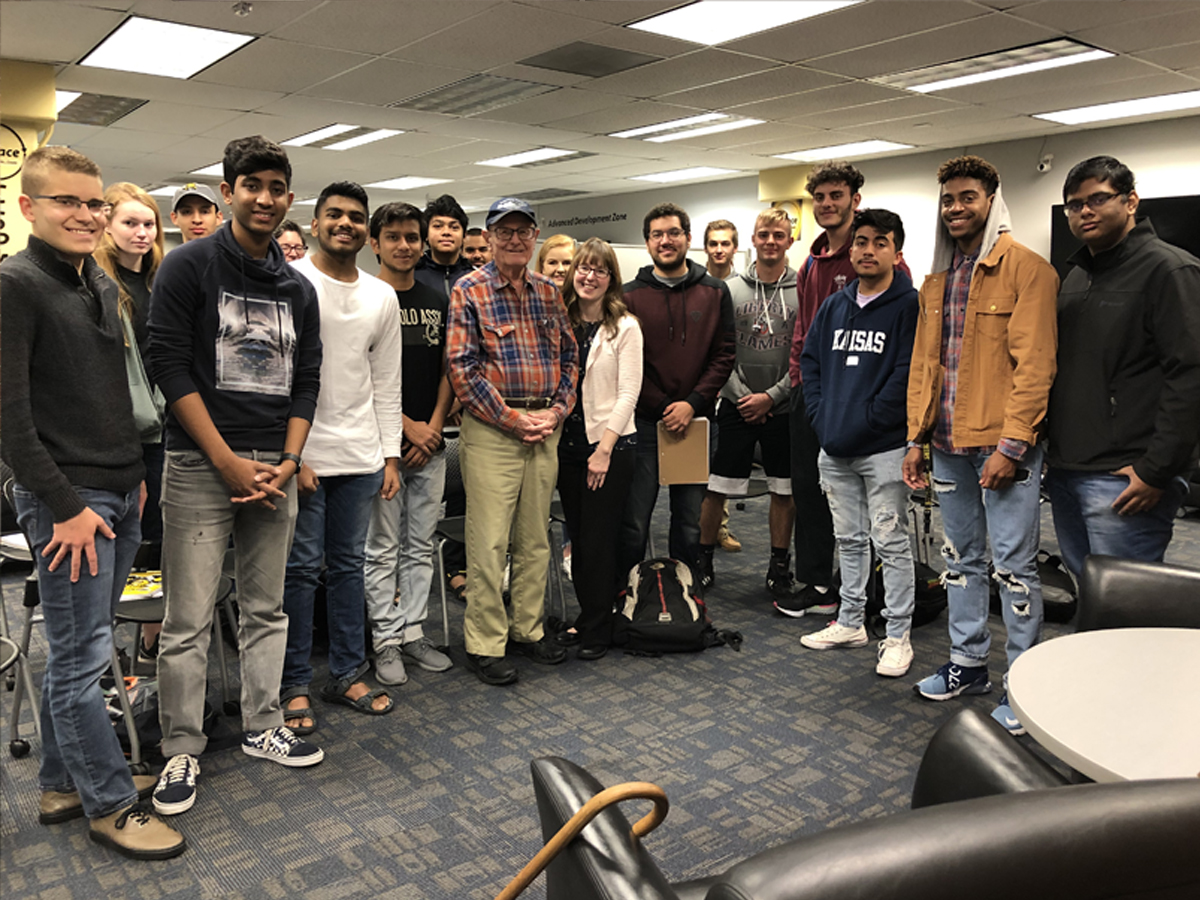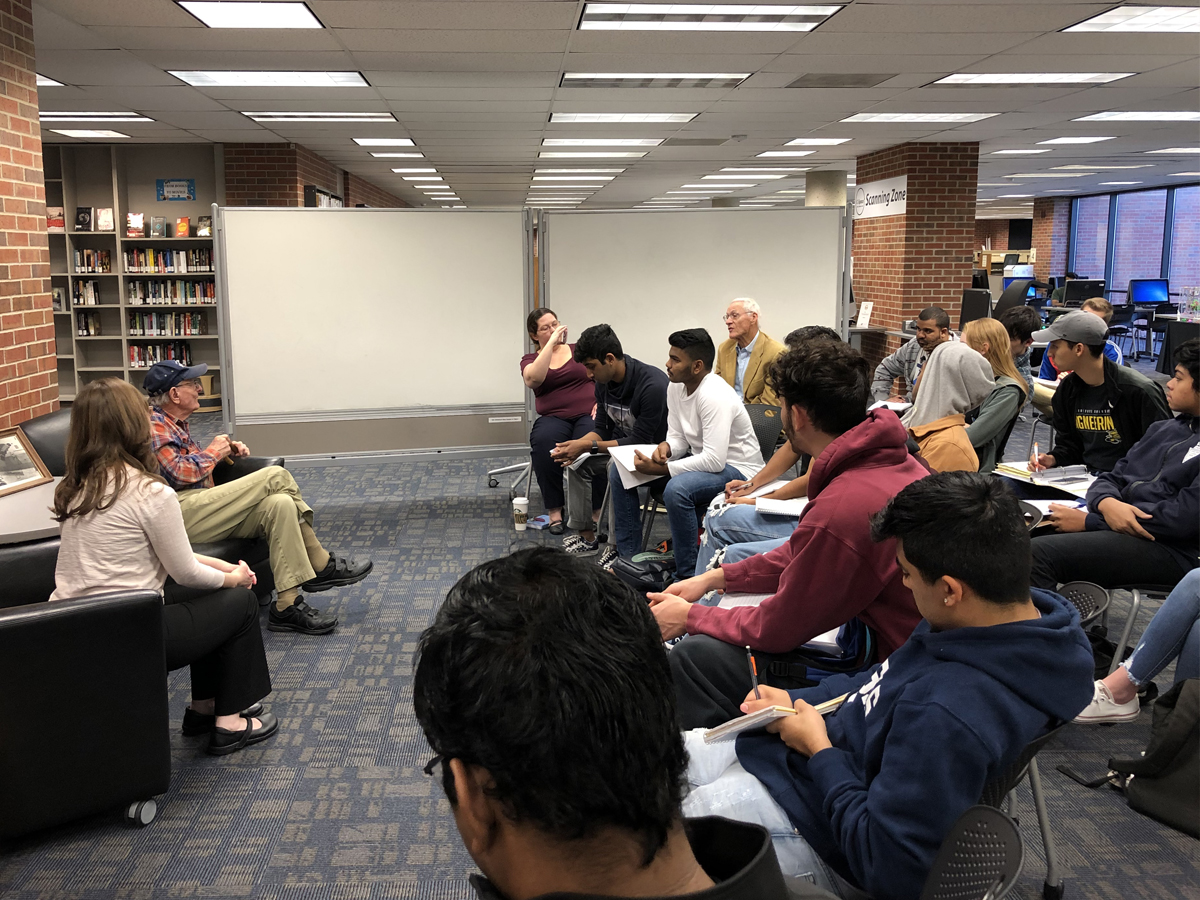Richard Martin was only 18 years old when he was drafted into the Army Air Corps. Two years later, he spent the first part of his 21st birthday in the nose of a Boeing B-29 bomber over Japan.
Now he’s 94 years old and the last living member of his squadron. He walked across campus on his own, with only the help of a wooden cane and his son next to him.
On Wednesday, Nov. 6, the students of WSU 102 “Innovations of WWII” met him in the Ablah Library C-Space.
Now he is one of increasingly few remaining veterans of World War II, and the students had a rare opportunity to ask questions and listen to his stories.
Martin cheerfully answered questions ranging from his initial training in Miami Beach, Florida, to his long career as an accountant after the war.

At Miami Beach, Martin and many other basic trainees bunked in a four-story hotel
repurposed as Army barracks.
“It even had an elevator, but they wouldn’t let us use it. We had to use the stairs all the time,” Martin said.
The Army placed him in the Air Corps, where he trained to be a bombardier. He deployed in 1944 with the creation of the 485th Bombardment Squadron.
The 485th was equipped with the B-29, which was one of the most advanced airplanes in the world at the time. Martin’s task was to aim the Nordon bomb sight, which was an early mechanical computer.
It was dangerous work. On one mission the airplane was chased by a “kamikaze” suicide aircraft that threatened to destroy the bomber. They turned hard and shook it off.
“That was the tightest turn I ever took in a B-29,” Martin said.

When a student asked him how he dealt with the stress of the bombing missions, he
kept smiling.
“You just did it. I don’t think you ever thought about stress. You got to be real good friends with everybody because you depended on each other for your lives,” Martin said.
During another mission, a live bomb failed to drop. It was stuck in the bomb bay.
Martin and his best friend, the B-29’s radar operator, went into the bomb bay to dislodge it. When the bomb bay doors opened, 60 mph of cold wind in the black of night struck them.
“I told him, ‘I’ll say, one, two, three, kick.’ My buddy got excited and kicked on ‘three,’” Martin said.
He kicked into thin air.
The bomb dropped safely, but Martin would never forget the moment.
The 485th was among the last squadrons in combat during World War II. Near the end of a mission on Aug. 15, 1945, his radio operator had news for the crew.
The war was over.

The B-29s stopped dropping bombs, but the mission wasn’t over. The 485th parachuted
thousands of pounds of food and supplies onto Allied POW camps.
It was a low-altitude mission, so Martin could see the POWs running toward the airplanes and the supplies with open arms.
When their supply mission ended, Martin finished his career as a bombardier. He became a mess hall supervisor on the ground.
“We had number 10 cans of peaches. I’m sure everybody got tired of peaches, but peaches were better than nothing,” Martin said.
Another student asked Martin if he still likes peaches.
He does.
Martin continued his education after the war and became an accountant. Years later, he sought out all of his crew members for reunions.
He found all of them except for his navigator. One of Martin’s family members was in the FBI, and he had them run a search on his navigator’s name.
Martin found out that his navigator lived in Sacramento, California. He gave his crew member a call.
“Why didn’t you find me sooner?” his navigator said.
“You’re lucky I found you at all,” Martin said.
Martin retired from accounting in 1983.
“I still do my own taxes, and my son’s too,” Martin said.
Martin is the last living member of the 485th, and he’s 94 years old.
Special thanks go to a number of people across WSU for this rare opportunity.
Samantha Corcoran, assistant engineering educator, organized this meeting for her class.
Sarah Butts, engineering, patents and trademark librarian, arranged to host us in Ablah Library.
The C-Space and its wonderful staff provided a comfortable space for us to have this conversation.
Most of all, many thanks go to Richard Martin and his family for their service and willingness to tell valuable stories that could easily be lost to history.



